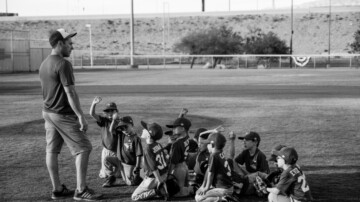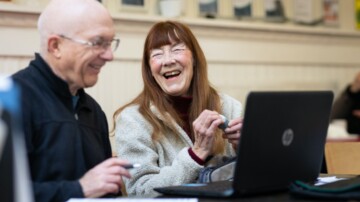The Old and The New: It’s Always Our Challenge

I recently completed my goal to earn a Doctorate. The last time I attended a university, it was on a beautiful, old campus lined with brick buildings with white pillars. I had an electric typewriter at home and carried a calculator that added, subtracted, multiplied and did division. I learned computer programming in a chilly room filled with massive equipment, flashing lights and mysterious noises. This go-around, I attended classes in my office, my living room, hotel rooms, on vacation—anywhere I was as long as I had an internet connection because my latest alma mater, California Southern University, is 100% online.
To meet the challenge of this personal goal for my education, I had to add to what I knew about succeeding as a student. Strategies I had used through college and graduate school had to be discarded or reshaped. Some of what I knew in terms of “how to be a student” didn’t apply this time around, but others things still did. (The textbooks are still expensive, heavy, and often dull—but I bought them used online instead of new from a bookstore.) I was essentially the same student I had been three decades earlier, but to succeed, I had to adapt to changes.
In nonprofit work, we must often combine the old and the new to achieve our goals rather than relying on just the new or just “the way we always have done it.”
Take, for example, the fundraising challenge du jour: retaining donors. Sure, it used to be different — there were fewer choices for a donor to support so they tended to remain more loyal.
But was that the only secret to donor retention?
I daresay we were more dependent “back then” on what we could deduce. Without algorithms and matrixes to select the best candidates to receive a message, we had to learn our donors’ preferences by reading their letters, taking their phone calls and talking with them face-to-face. I don’t advocate throwing out all the wonderful ways to be more targeted in our communications and more selective in our messaging. But our challenge is to combine these great tools with a concerted effort to build true relationships with supporters and make them feel genuinely valued, not just the recipient of an automated acknowledgement — albeit sent immediately, but lacking the human touch that still resonates today.
We have more tools than ever before as fundraisers. But they remain just that — tools.
They are only as good or bad as we make them when we use or misuse them. When we edit the heart out of copy, use privacy laws as excuses to skip the hard work of telling our story with passion, delegate “donor relations” to poorly trained entry-level employees instead of really listening to what donors are saying . . . is it any wonder our donors don’t really feel connected to us and like their gift really is making a difference?
The retention challenge really never changes — we must use the tools we have in the best way to show our donors how important they are to our mission and to those of us charged with fulfilling it. Our donors still want to be “liked,” be it in person, on Facebook or by the organizations they choose to support with discretionary funds.
As fundraisers, we must never stop asking, “Will this help deepen our organization’s relationship with donors?”
That’s a great way to choose the tools we use, and those we set aside.
Postscript: For those of you who helped me achieve my educational goal by participating in my research last fall, thank you. And, I owe you . . . because I promised to share the results of my research. I learned that disseminating that information before my doctoral project was accepted was verboten, but beginning in April, I will both share a summary and write additional blogs about what the findings might be saying to us.



